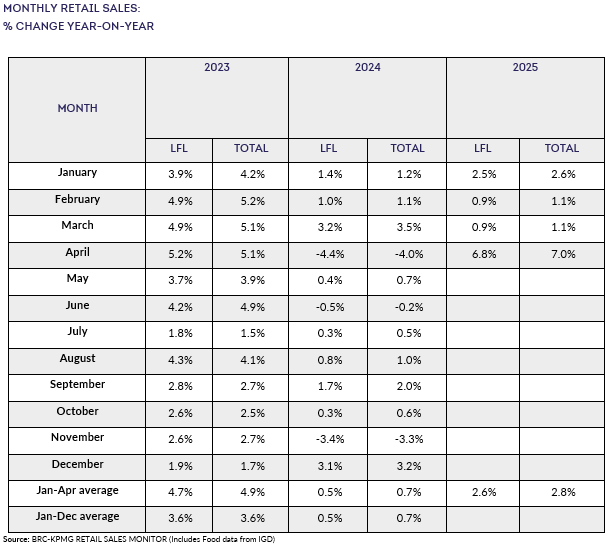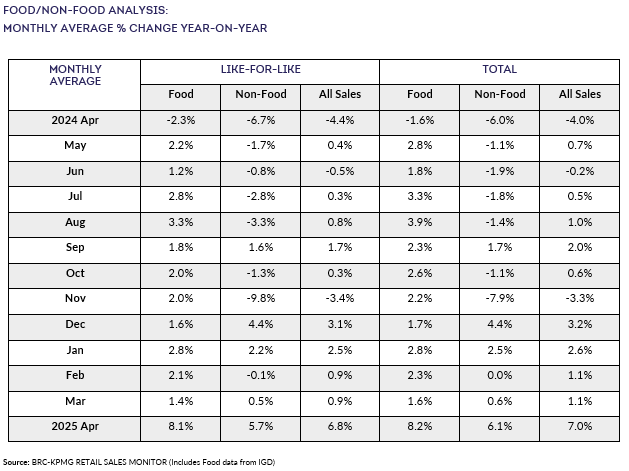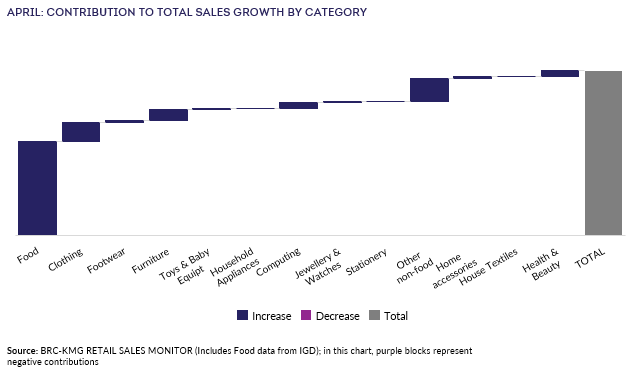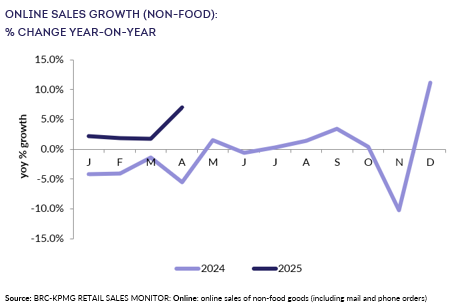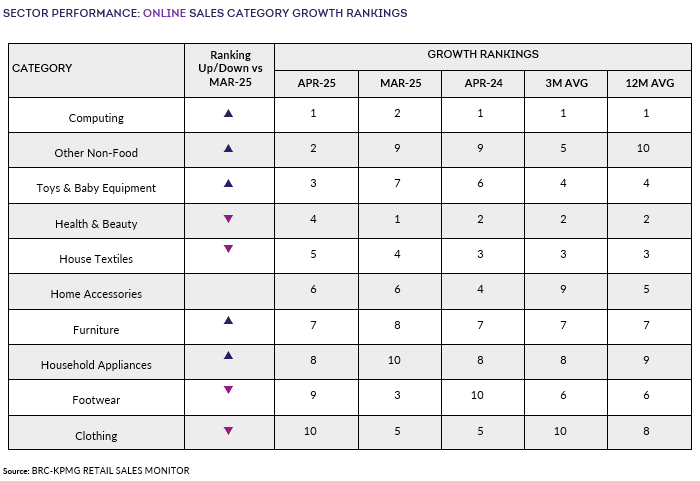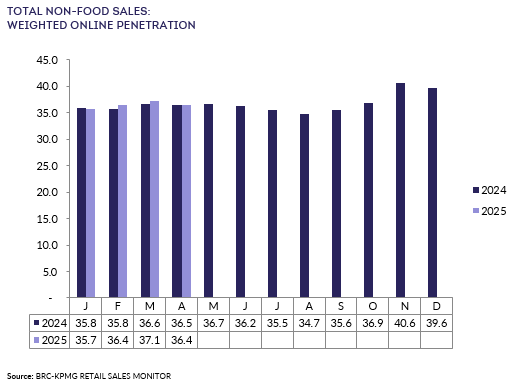This year Easter was in April, while last year it was
in March. This calendar change distorts the year-on-year sales
comparisons - resulting in an artificially higher April, but
lower March sales growth. In addition to April results, we also
report the combined results for March and April to negate this
distortion, presenting a clearer view of the underlying sales
trend.
Covering the four weeks 06 April – 03 May
2025
-
UK Total retail sales increased by 7% year on
year in April, against a decline of 4% in April 2024. This was
above the 3-month average growth of 2.9% and above the 12-month
average growth of 1.4%.
-
For March and April together, compared
with the same two months in 2024 (to mitigate the
year-on-year timing of Easter) UK Total retail
sales increased by 4.3% year on year for the
two-month period.
-
Food sales increased by 8.2% year on year in
April, against a decline of 1.6% in April 2024. This was above
the 3-month average growth of 3.9% and above the 12-month
average growth of 2.9%.
-
Non-Food sales increased by 6.1% year on year
in April, against a decline of 6% in April 2024. This was above
the 3-month average growth of 2.1% and above the 12-month
average growth of 0.1%.
-
In-Store Non-Food sales increased by 5.6% year
on year in April, against a decline of 6.2% in April 2024. This
was above the 3-month average growth of 1.3% and above the
12-month average decline of 0.8%.
-
Online Non-Food sales increased by 7% year on
year in April, against a decline of 5.5% in April 2024. This
was above the 3-month average growth of 3.4% and above the
12-month average growth of 1.8%.
-
The online penetration rate (the proportion of
Non-Food items bought online) decreased to 36.4% in April from
36.5% in April 2024. This was below the 12-month average of
36.8%.
Helen Dickinson, Chief Executive of the British Retail
Consortium, said:
“The sunniest April on record brought with it a boost to retail
sales. While the stronger performance was partially a result of
Easter falling in April this year, the sunshine prompted strong
consumer spending across the board. Food sales performed well as
people brought together their family and friends for Easter
celebrations, while sales of DIY, homeware and gardening goods
shone bright as people made the most of the weather. Clothing
sales, where growth has been sluggish in recent months, also
improved as consumers refreshed their wardrobes for the new
season.
“But clouds loom on the horizon as new costs begin to bite. Even
a strong April performance will do little to make up for the
extra £7bn facing the industry this year. Both Employer National
Insurance Contributions and the National Living Wage rose last
month, and retailers face another £2bn bill when a new packaging
tax comes in later this year. If the Government wants to secure
the future of our high streets, then it must ensure that no shop
pays more as a result of the upcoming business rates reforms, or
it will be our local communities that pay the price.”
Linda Ellett, UK Head of Consumer, Retail & Leisure,
KPMG, said:
“Retail sales have been showing growth for five months now.
The pace of that growth picked up in April due to Easter
and the drier weather boosting clothing and garden related sales,
while the uptick in house buying ahead of the Stamp Duty changes
likely filtered through to furniture and DIY related sales, as
well as other homewares.
"Consumers tell us they are still taking steps to manage their
household budgets, so retailers will need to focus on how they
can continue to unlock spending over the coming months to keep
the growth going - including capitalising on purchases related to
strong summer holiday demand."
Food & Drink sector performance | Sarah Bradbury,
CEO, IGD, said:
“April saw a welcome boost for the market and shoppers, thanks to
sporadic spells of warmer weather, interest rate cuts and the
long Easter weekend, which lifted overall confidence by a point.
However, the persistent challenge of food price inflation, which
climbed to 2.6% in April from 2.4% in March, continues to weigh
heavily on both businesses and households. As they grapple with
rising costs, we foresee limited further gains in shopper
confidence."
